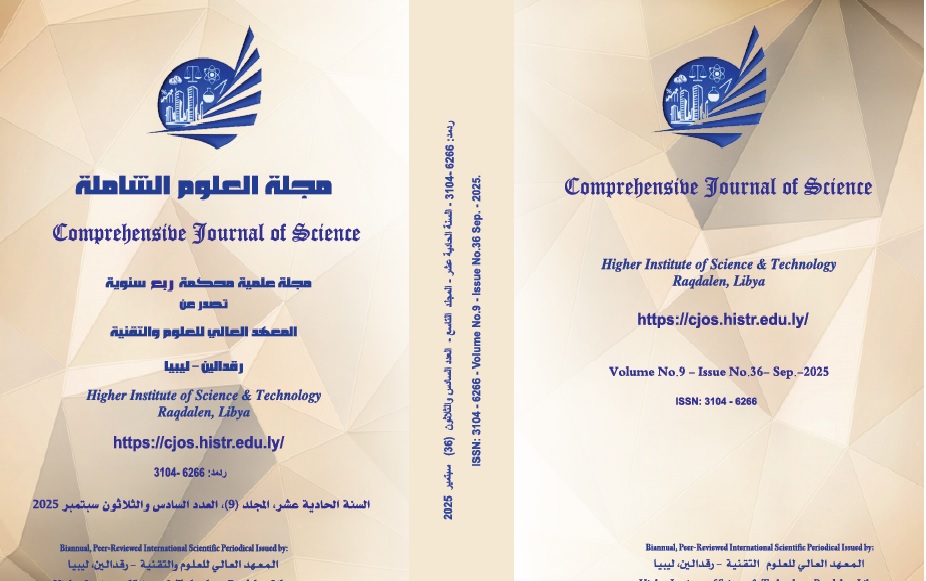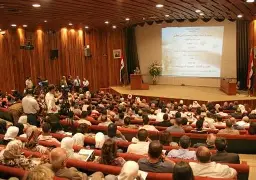الحملات الصليبية وتأثيراتها على الوضع السياسي والاقتصادي في المشرق الإسلامي
Abstract
The aim of the research was to analyze the impact of the Crusades on political systems in the Islamic East, monitor the economic effects of the Crusades on trade, agriculture, and industry in the Islamic world, and highlight the social impacts resulting from the Crusades on Islamic societies. The research also aimed to identify the political, economic, and social challenges arising from periods of external wars, and to evaluate the role of the Crusades in shaping political relations between the Islamic East and the Christian West.
The historical, analytical, and descriptive methods were used to clarify the various aspects of the Crusades and their impact on the political and economic situation in the Islamic East. The study tools included sources and references that dealt with the research topic, and the study concluded several key findings, including:
- The Crusades contributed to the fragmentation of political unity among Islamic powers, as they deepened political and sectarian disputes among local rulers in different parts of the Islamic world. These divisions hindered effective coordination to confront the Crusaders, allowing them to benefit from the state of disunity within the Islamic world.
- New political alliances emerged between some Islamic powers, leading to the unification of several Islamic regions under a single banner to resist the Crusaders, which marked a turning point in the history of relations between Muslim rulers.
- The continued internal conflicts between Muslim rulers over power and influence in different Islamic regions, which were under the control of competing rulers, resulted in persistent political chaos in some areas.
- The Crusades served as a real test for internal relations among Islamic powers. At times, it strengthened cooperation between Muslim rulers, while at other times, it deepened disagreements and competition for power, making the defense of Islamic lands more complex.
- The internal political difficulties demonstrated the Islamic world’s ability to withstand and resist external challenges. Efforts were made to unite ranks to confront the Crusader threat, which contributed to their resilience in the face of Crusader attacks over long periods.
Downloads
References
1. ابن الأثير، عز الدين ،دار الكتاب العربي، بيروت ، 2000.
2. البلاذري، أحمد بن يحيى ،فتوح البلدان ،دار إحياء التراث العربي، 1965.
3. الجبرتي، عبد الرحمن، عجائب الآثار في التراجم والأخبار، دار المعارف، 1972.
4. حسن، علي. الحروب الصليبية، دراسة تحليلية ، دار العلوم، 2005.
5. خليل، محمد، الحروب الصليبية وعلاقتها بالعالم الإسلامي، مؤسسة الريان للنشر، 1996.
6. زكريا، فاطمة، الآثار الاجتماعية للحروب الصليبية في المشرق الإسلامي ، دار الكتاب المصري، 2001.
7. الطبري، محمد بن جرير،تاريخ الرسل والملوك،دار الفكر، 1987.
8. عبد الله، عبد الرحمن، تاريخ الحروب الصليبية في المشرق الإسلامي، دار الجيل للنشر، 2003.
9. علي، عبد الله،صلاح الدين الأيوبي وأثره في الحروب الصليبية، دار الكتاب الحديث، 2007.
10. عواد، توفيق، الأنظمة السياسية في العالم الإسلامي خلال العصور الوسطى ، دار الفكر المعاصر، 1998.
11. فاروق، أحمد،أثر الحروب الصليبية على الاقتصاد الإسلامي ،دار النشر العربي، 2009.
12. قاسم، محمد، الحروب الصليبية وتاريخ الصراع الإسلامي المسيحي ،دار النهضة العربية، 2010.
13. الواقدي، محمد بن عمر. المغازي. دار إحياء التراث، 1990.
14. يوسف، سليم. الاستراتيجيات العسكرية في الحروب الصليبية. مكتبة مدبولي، 2006.
Downloads
Published
Issue
Section
License

This work is licensed under a Creative Commons Attribution-NonCommercial-ShareAlike 4.0 International License.











